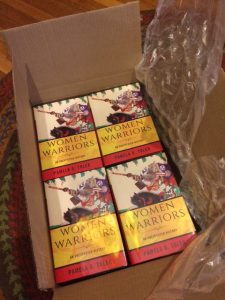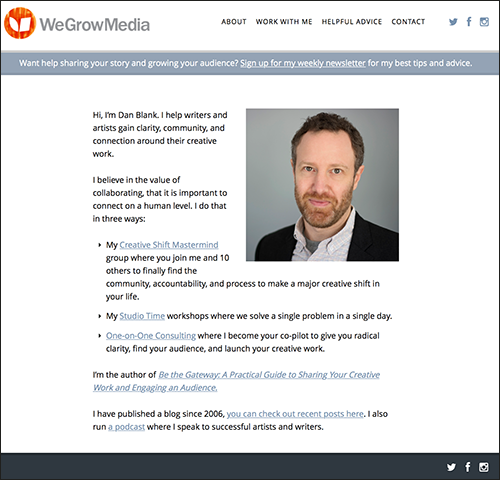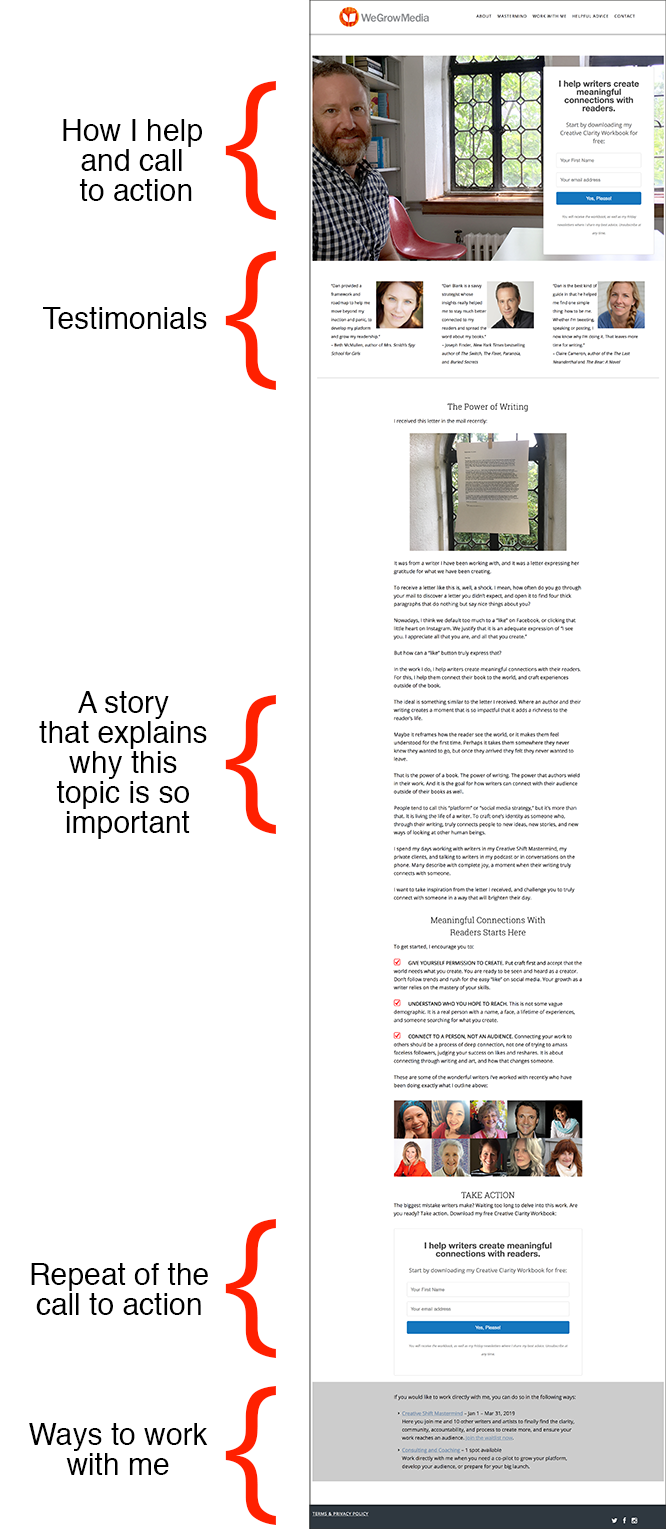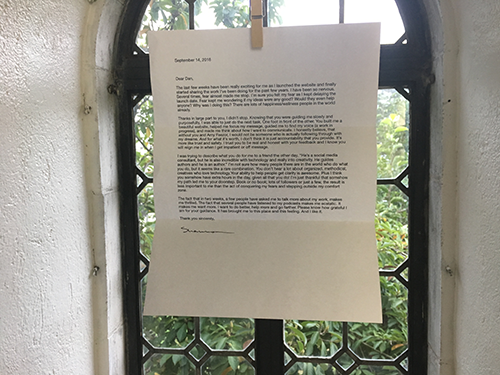Earlier this year, author Pamela Toler hired me to help her prepare for her upcoming book launch. We began working together 8 months before launch day, and when I said to her, “Many writers may ask why you began working with me so far ahead of book launch,” her reply was:
“I felt I was starting at the last possible minute to ensure I was taking the steps I wanted to, without being in a rush. To be thoughtful about it, and cast a wide net.”
Why did she feel that way? Because she has been down this road before. She had published other books with big publishers, and knew how much work there is to be done, and that she didn’t want to do it alone.
Today I want to take you behind-the-scenes into the work that she and I did. This is the stuff I do day in and day out with authors. Over the past eight years, I have done this hundreds of times with writers. If you are preparing for a book launch of your own, I hope this insiders look will be helpful.
Pamela Toler is an author, speaker, and historian whose next book will be released on February 26, 2019, titled: Women Warriors: An Unexpected History, published by Beacon Press. This is the book launch we worked on.
You Need Collaborators. Even If You are An Introvert. Even If You Have No Money To Invest.
Pamela’s previous books include Mankind: The Story of All Of Us (published by Running Press), Heroines of Mercy Street: The Real Nurses of the Civil War (published by Little, Brown and Company, and The Everything Guide to Understanding Socialism: The political, social, and economic concepts behind this complex theory (published by Adams Media.)
While I work with a lot of self-published authors, I also spend 50% or more of my time with traditionally published authors such as Pamela. I point this out because I think that would surprise new authors or self-published authors. There is this perception that “Once you make it — once you are traditionally published — everything will be handled for you. You can just focus on writing.”
But that isn’t true. Publishers are amazing partners in the process of sharing your book with the world, as I will share below. I think it is important to note that Pamela hired me even though she has an amazing publisher, and even though she has an established career as a published writer.
Professionals need collaborators. Whether you are starting out, or are mid-career, I want to encourage you to develop professional relationships. There are a million ways you can collaborate with people.
Too many writers are mired in hundreds of articles, blog posts, podcasts, webinars, and courses telling them all of these tips about how to develop a platform and launch their book. I mean, this very blog post is one of them. The problem with that is that writers can feel “I am doing the work of being a professional,” while they are totally and completely isolated.
You should have colleagues. This may include:
- Other writers who write in the same genre or topic as you.
- Any other writer, even if they write different things from you.
- Booksellers
- Librarians
- Those who organize literary events, festivals, conferences, readings, etc.
- Readers! People who like to read!
- Editors
- People who support books in any form. Yes, this can include agents, publishers, publicists, marketers, etc.
I speak to professional writers and artists nearly every day. What do they have that others don’t? A creative community. A network of professional colleagues and personal friends who create and support creative work.
How did they get this? They reached out. They showed up. They were curious. They were generous. They were supportive.
None of those things require you to spend even a dime. They just require you to be human.
Prepare For the Work of Being A Published Author
Can an author just write, and never give a thought to platform, marketing, or social media? Yes! I love when people write for the sake of writing.
But… when you publish, you are also participating in the business of publishing. This idea that publishing costs money, and that books don’t magically find their way into readers hands. Asking someone to spend 6-10 hours reading your book is not a small ask.
This is why Pamela said she hired me:
“I wanted a collaborator because I was too close to it. I wanted someone who would ask hard questions. The deadlines you set were useful, otherwise, a lot of important actions would get pushed to the bottom of the list. Collaborators bring different eyes to it.”
She then listed out some more specific reasons. The quotes are from her, and then I add some commentary after each:
- “To maximize opportunity and give the book best possible chance.” The thing that no one wants to tell you is that no one really knows what will ensure your book will be a breakout success. So the real work is to do careful analysis of your ideal audience, how you can reach them, and then put in place a few specific marketing pieces. I dig into that below.
- “Help in managing the stuff that I will have to do.” When I work with an author, I typically create a spreadsheet of all of the possible actions we can take, and from that, we carefully select key items. Even in doing that, there is so much to be done. This is where authors drown. Having someone to help prioritize and manage this is the difference between freaking out and feeling professional.
- “Free up the publisher to do what they do best.” I loooooove the work that publishers do. But the truth is often that they have a finite amount of resources to give to any one book. The more that Pamela can do on her own to support the book, the more that this will clarify and amplify the work that the publisher will do to market it.
- “To feel sane and relaxed.” It’s worth noting that Pamela is incredibly busy preparing for the book launch and attending to the rest of her life. She is swamped. I don’t want to make it seem as though she is in this luxurious position of feel super calm. But… because of the work she and I did, she doesn’t feel pushed over the edge, and isn’t freaking out about missing chances.
The Work We Did
8-months prior to book launch this is the work that Pamela and I focused on:
- Clearly identify the ideal reader for the book. We analyzed what she knew about her audience already, and then dug deeper into where they hang out, and who already reaches them. We created personas for her three core audiences, and then identified what podcasts those people listen to, books they read, blogs they follow, events they go to, etc. Some of this was a brain dump of what Pamela already knew, and some of it was a big expansion. This spreadsheet gives us hundreds of ways to consider how she can connect with ideal readers, yet the entire time, envisions them as an actual person, not some vague set of demographics.
- Get radically clear on her messaging. We analyzed everything about how she talked about the book, herself, and her writing. We rewrote her bio, her social media profiles, and considered how to frame the current book with her previous books, and even her future books.
- Assess her online presence. We identified what needed to be updated, what was missing, and how to ensure each piece was accurate and ready for the new book. Her online presence is now much more clear than it was. During this process we worked through a complete redesign of her website (she also hired a web design firm to create that), and a revamp of her social media channels.
- Create a book launch timeline. We started looking at what to do and when. We went through an exhaustive list of categories and tasks that she could focus on, and then selected what would matter the most to her book. We then broke those tasks down into specific actions, and aligned them to a calendar. This timeline goes from the Fall of 2018 to past the book launch.
- Clearly define key marketing campaigns. There are a few key ideas that were developed as marketing campaigns. I can’t say what they are yet, because they are in development, but something to take from this is to clearly identify one or two ideas that you can totally hit out of the park. That will be generous to others, filled with joy, and that people will want to share.
- Create an editorial calendar. We created a day-by-day, week-by-week editorial calendar that covers her email newsletter, blog, speaking events, and social media channels. What we wanted to consider was how her message develops as she moves towards launch, and how she can share authentic and engaging content without resorting to Tweets that screamed “Buy my book!” We also left a lot of white space in the calendar for her to share thoughts and ideas that can’t be pre-planned.
- Demystify the technical questions. I was on call to help troubleshoot and guide her through any technical questions that came up along the way. This could include website, social media, podcasting, and so much else. There were a number of places where I smoothed over something that would have taken her a long time to find and do.
- Consider post-launch as much as she considered pre-launch. Pamela will be speaking and promoting this book well after launch date. That allowed us to consider how she can set herself up for success in April, May and June, months after the release date for the book. Plenty of authors come away from a book launch exhausted and confused. For Pamela, we want this work to be sustainable and filled with moments of meaningful connection with her readers for months, and years, to come.
Throughout all of this, Pamela was coordinating with her publisher, who are just amazing, by the way.
Update after the launch of the book in March 2019: I woke up one morning this week to this lovely email from her:
Yesterday all my on-line channels went crazy. Lots of people from my past and present weighed in about the book. I feel lucky, and I know I worked hard to make that luck.”
I think a lot of what happened came because over the years I’ve been listening to some things you’ve said and integrated them into the way I work (which in all fairness dovetail nicely with my dad’s management philosophies). It was all summed up for me in this comment on Facebook from a woman who has become a true fan over the last two years:
“My copy should be waiting for me when I get home tonight! I can’t wait. What a delight it’s been to watch this amazing project come to life. I so appreciate Pam letting us tag along on her journey and her transparency on the challenge of taking an idea and give it life through the written word. Thank you, Pam.”
And here is a photo that Pamela shared when she received her own copies of the book:

That moment — not just of being published — but of being read is where the magic happens. When the intention of the author meets the worldview of the reader. When those two things meet, art happens.
If you need help in this process for your own writing, you can learn more about my services here.
Thanks!
-Dan
P.S.: You can find Pamela in the following places:
Her new book: Women Warriors: An Unexpected History
pameladtoler.com
Her blog: History in the Margins
Instagram: @pamelatolerauthor
Twitter: @pdtoler
Facebook



